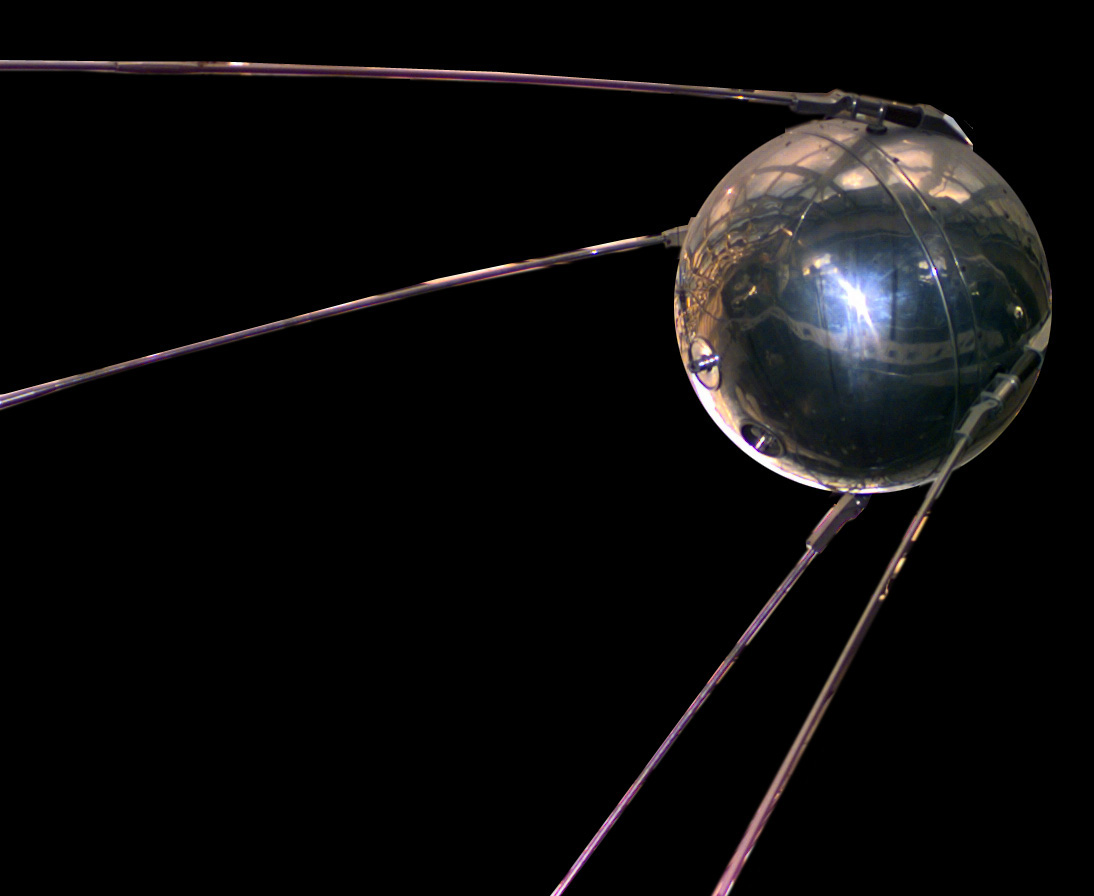
[NASA, 1957]
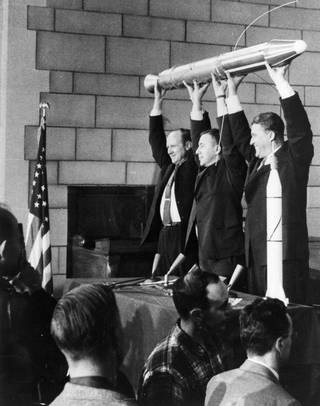
[NASA 1958]

[NASA, 1957]
The start of the space race began with the launch of Sputnik. On October 4, 1957, the Soviet Union launched the first artificial satellite. Sputnik caught the attention of the world. Soon after the U.S.S.R. launched another satellite named Sputnik ll.
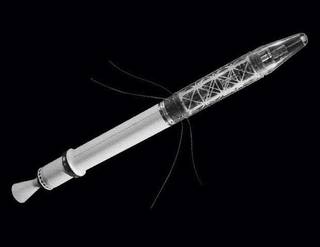
[NASA, 1958]
The U.S - U.S.S.R. space race continued when the U.S NASA program launched Explorer 1 (discovering the Van Allen Belt in the process).
President John F. Kennedy was a huge advocate for the U.S. landing a man on the moon and a catalyst in BREAKING the barrier of space exploration. In a special message to Congress in May 1961, the President committed to putting a man on the moon. Some progress was made in the months to follow, however, the U.S. was behind in the space race. In an effort to ensure the accomplishment of landing on the moon, President Kennedy issued a National Security Action Memorandum on April 11, 1962, that assigned the Apollo program as the highest priority for research and development. President Kennedy also chose to personally check on the progress of the program. One month before the President was to travel to check on the progress of the NASA installations the Soviet Union succeeded in launching the Vostok III and Vostok IV within one day of each other. Another first in the space race in which more than one manned spacecraft was in orbit at the same time. Once again it was evident that the U.S. was desperately behind. When asked about the situation in a press conference in August 1962, President Kennedy candidly shared the challenges the space program was experiencing. “So we are behind, and we are going to be behind for a while. But I believe before the end of this decade is out, the United States will be ahead.”
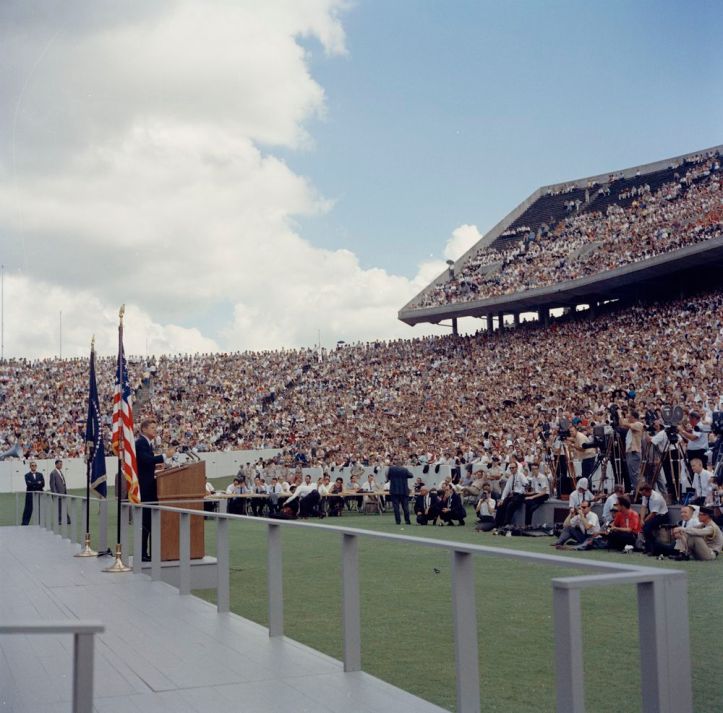
The next month after viewing NASA installations in Houston, President Kennedy had the opportunity to share even further about the U.S.’s commitment to the Apollo program and taking its place in the lead of the space race in a speech at Rice University Stadium. President Kennedy’s speech was written by Ted Sorenson and many agencies provided input, including the Department of State, NASA, and the Bureau of Budget. Sorenson modified the first draft in which President Kennedy chose to speak read as follows; “…we choose to go to the moon in this decade, not because that will be easy, but because it will be hard — because that goal will serve to organize and measure the best of our energies and skills — because that challenge is one we are willing to accept, one we are unwilling to postpone, and one we intend to win. ” This speech given at Rice University Stadium on September 12, 1962, is one of the most memorable speeches surrounding the space race.
“President John F. Kennedy speaks at Rice University, 12 September 1962.”[JFK blogs, 1962]
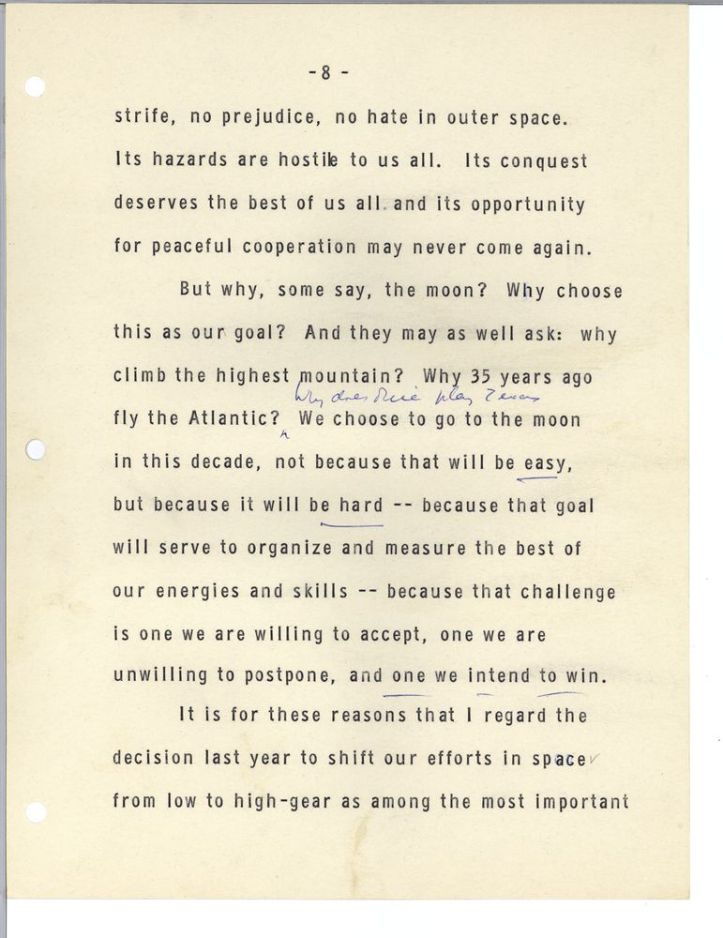
[JFK, blogs, 1962]
"President’s reading copy of his address in Houston, Texas "
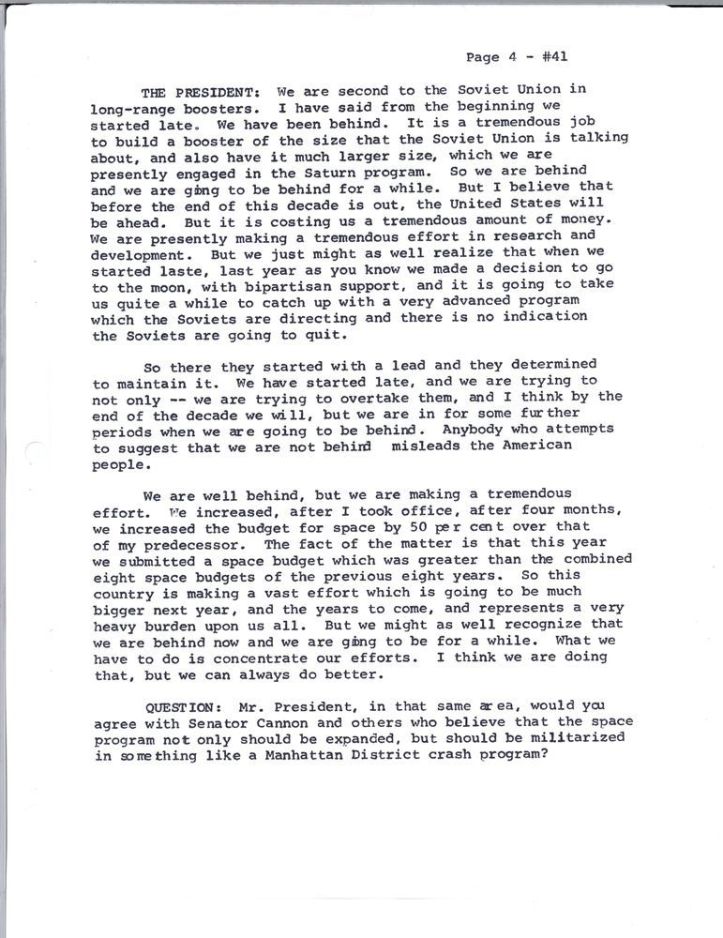
[JFK blogs, 1962]
"Official White House Transcript"
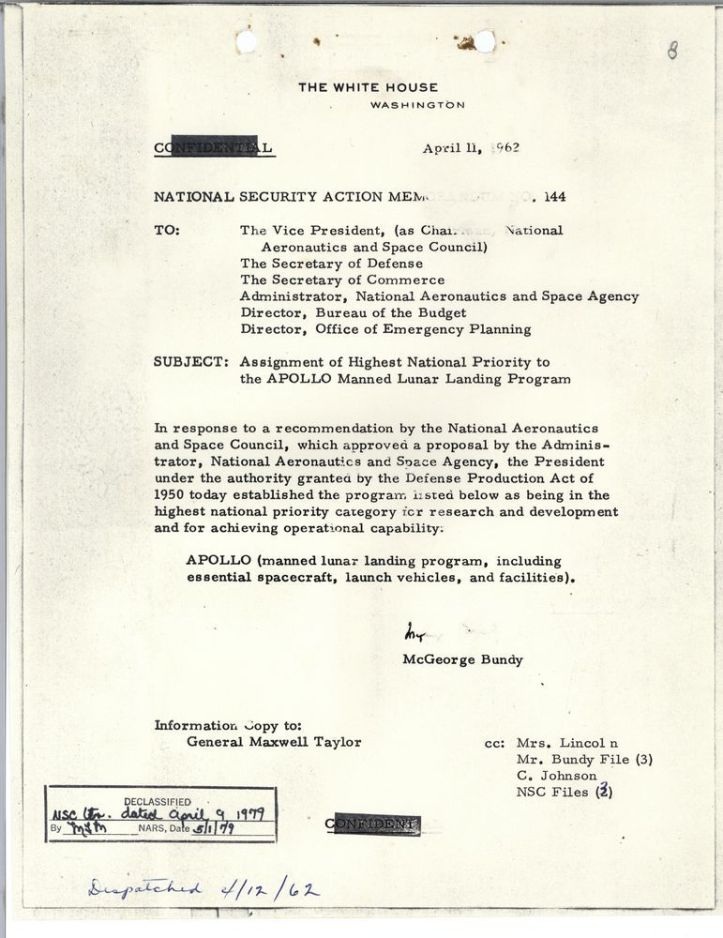
[JFK blogs, 1962]
"Assignment of Highest National Priority to the APOLLO Manned Lunar Landing Program"
President Kennedy indeed did not provide an explanation of how the US would move to the forefront of the space race, he stated it would happen. “Well, space is there, and we're going to climb it, and the moon and the planets are there, and new hopes for knowledge and peace are there. And, therefore, as we set sail we ask God's blessing on the most hazardous and dangerous and greatest adventure on which man has ever embarked.”
Background [NASA, 2020]